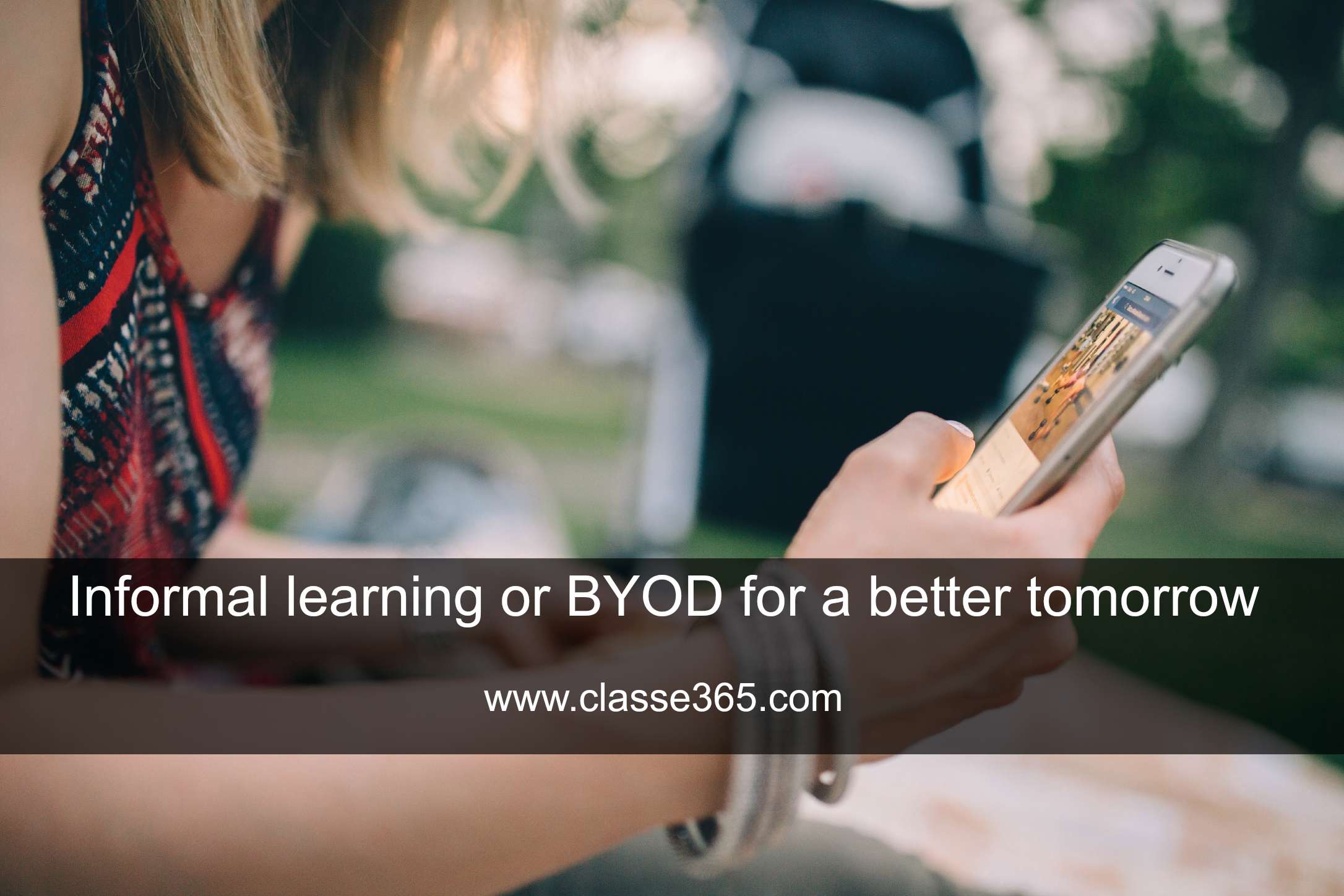What is the first thing that pops into mind when you think about “education”? Probably a “chalkboard”, “classroom” or “student-teacher interaction” etc. In this traditional method of teaching, students are fed the same amount of information at the same rate. The level of understanding is different for each student. Teachers, regardless of whether students have understood the concept taught or not, keep pressing forward to finish their course. Some students fail to understand even a small part of what was taught because the knowledge was just forced on them. This standard classroom learning is known as “formal learning”. Forced knowledge is one of the greatest drawbacks of formal learning.
Throwing technology into education can have varying effects depending on it’s method of implementation. What can we achieve
BRING YOUR OWN DEVICE – BYOD in Classrooms
Consider a school that wants to change their teaching model from the old traditional method by using laptops as learning tools in the classroom (BYOD in Classrooms). There are 50 students per class, but only 20 laptops allotted. Buying a laptop for each student is a very expensive affair that the school isn’t willing to do. Does that mean that its impossible to incorporate technology in the classroom? Not at all! Taking advantage of the fact that most students have a smartphone or laptop at home, the institution can encourage students to “bring your own device” to school. In this way, the students with a laptop or phone at home can make use of it in the classroom, and the 20 laptops allotted to each class can be used by the other students who don’t have their own device.
Incorporating BYOD still retains the “classroom” in education. This isn’t necessarily a bad thing. Every student gets a hands on experience of what goes on in the classroom, making them learn more efficiently and interactively. Thus, BYOD is considered as an E-Learning method which leans towards the ‘Formal Learning’ side of education.
INTRODUCING INFROMAL LEARNING
In the discussion above, though we implemented technology in education, we still retained the “classroom” for of learning. Another alternative of introducing technology can completely remove the very idea of learning in the classroom. This model is known as “informal learning”. Some education models that fall under informal learning include :
Flipped Classroom : is more of an informal learning model where students study a lecture before the actual classroom session through comprehensive online study material. Classroom sessions are meant to simply clear doubts with the teacher, if any.
M-Learning : strictly incorporates informal learning as it involves learning from micro lessons over a phone, wherever, whenever. The micro lessons are clear and to-the-point discussions, without illustrating too much detail.
A PERSONAL EXPERIENCE WITH INFORMAL LEARNING
To actually get a clear picture as to how formal and informal learning differ, consider this analogy of my college days : In college, they taught a course on UNIX. I found the subject quite uninteresting. At the beginning of every class , I’d just open a book and pretend that I was taking down notes, when I was actually just drawing bad cartoon characters instead! How did I get away with it, you ask? Well, I was sitting in the back bench and my grades weren’t too bad, so I guess I went unsuspected. Anyways, its clear that stating UNIX was “uninteresting”, was an understatement. I saw no use for it at the time. I just memorized some theory and managed to pass. But even afterwards, I still knew nothing of UNIX!!
A few months later, I decided to create a website, But for it to work, I needed to modify file permissions using UNIX commands! I had no choice, so I learned UNIX from scratch using online material. Relearning UNIX, I realized its applications and how useful it can be!
The first time I learned UNIX was in the classroom. Here, the knowledge was forced on me. I never really needed it then, so learning it was very inefficient. This illustrates formal learning. When I learned UNIX on my own, It was my own free will, thus illustrating informal learning.
DRAWBACKS OF INFORMAL LEARNING
Its no easy task to incorporate an informal learning model. There are a few things that an institution has to look out for :
->Mobile phones serve as a distraction. A student’s full attention wont be on learning!!
-> The cost for institutions to provide devices for students in schools can be quite significant
-> Informal learning doesn’t work out for everyone. It involves a lot of self study. Some students may lag behind as they still rely on teachers to “teach”.
-> Informal learning requires a lot of planning on the teacher’s end. Creating online study material (like micro lessons) , scheduling a course for the entire academic session, and forming assignments that ensure the use of technology without parental guidance are a few things that a teacher must look out for.
CONCLUSION
What we can accomplish with informal learning is truly amazing. But for some institutions, each one of those drawbacks are difficult to overcome. The type of learning adopted can vary.
But in the end, the deciding factor is willingness to accept technology as a friend, and guide their students to a better tomorrow.
If you are an educator looking for student information system software or learning management system, give Classe365 a go. Remember its the software + hardware + teachers that turns learning to knowledge.
